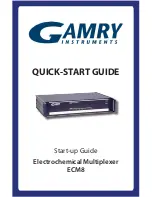
Installing and Connecting the Hardware
2-19
8600-A2-GN20-20
October 1997
3. Carefully slide the MCC card into the slot. Gently, but firmly, push the card
until it engages its mating connectors on the backplane.
4. Press on the right side of the MCC’s front panel with one hand and on the
back of the 8600 chassis with the other until the MCC’s connector seats in its
mating connector.
5. Make sure the OK SYSTEM indicator on the MCC faceplate is ON (green).
if not, refer to Chapter 4,
Troubleshooting
.
6. Secure the MCC card by fastening the screws on each end of the faceplate.
NOTE:
The MCC card may be replaced without disruption to user data (i.e., you can
remove and re-install the MCC card without powering down the 8600 chassis
and disrupting service to the other cards). To remove the MCC card from the
base chassis, unfasten the screws on both ends of the faceplate. Then,
simply push the ejector handles outward and slide the card out.
When swapping the old MCC card with a new MCC card, it is important to
note that the 8600 chassis DSLAM retains the Media Access Control (MAC)
address, also referred to as the physical address. This means that the new
MCC card will have the same MAC address as the old one.
Installing DSL Cards
Use a small- to medium-size flat-blade screwdriver to install the DSL card.
NOTE:
The 8600 chassis are shipped with filler plates in Slots 1, 2, and 3. If the slot
where the DSL is to be installed has a filler plate, it must be removed.
Do not discard filler plates. Each slot in the chassis must contain a circuit
card or a filler plate to maintain the required EMI shielding and to prevent air
leakage from the forced air cooling. Air leakage could result in overheating
which may cause the power to the circuit cards to be shut off. Store all
unused filler plates in a safe place. You may need to use the filler plates to
cover open slots in the chassis at a later time.
!
HANDLING PRECAUTIONS FOR
STATIC-SENSITIVE DEVICES
This product is designed to protect sensitive components from damage
due to electrostatic discharge (ESD) during normal operation. When
performing installation procedures, however, take proper static control
precautions to prevent damage to equipment. If you are not sure of the
proper static control precautions, contact your nearest sales or service
representative.
496-15104
















































